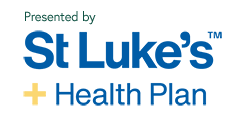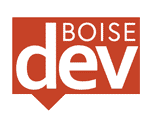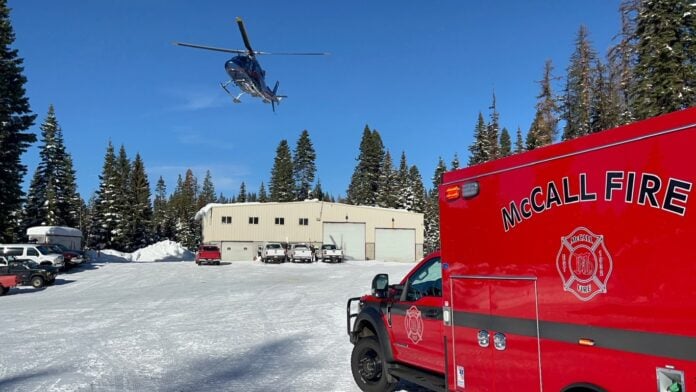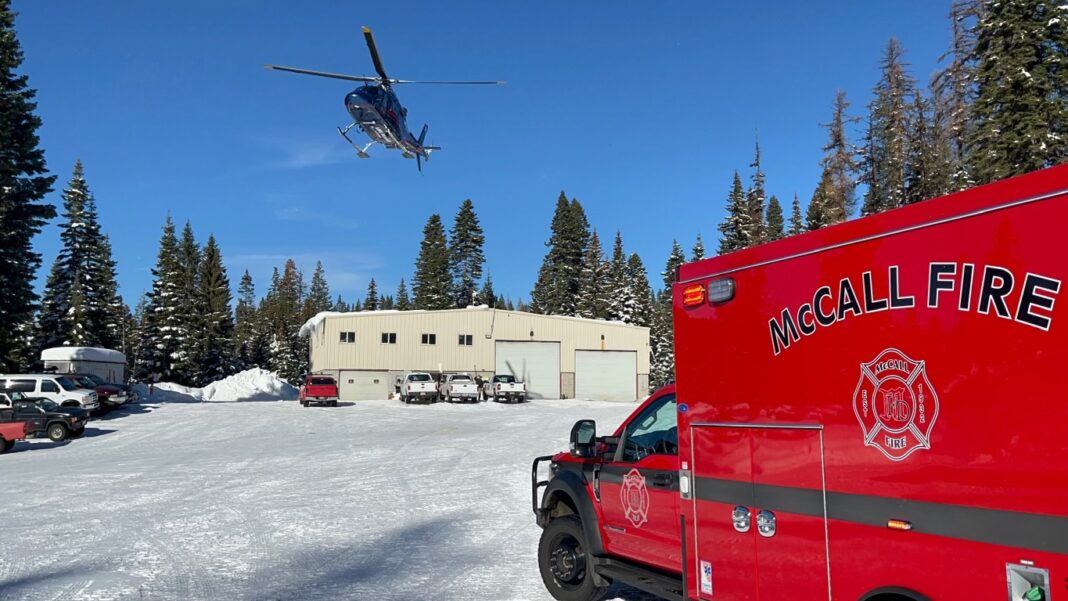In Valley County, if a person suffers a medical emergency and needs an ambulance, help might take more than 20 minutes to arrive.
Fire Chief Juan Bonilla said just such a scenario has happened a couple of times recently when the county’s three ambulances and their staff were already helping other people. In one instance, the person calling for help was experiencing anaphylaxis, or a severe allergic reaction that requires immediate treatment and a trip to the hospital.
Fortunately, that person had medicine on hand to stabilize themselves while they waited for help. But Bonilla worries what would happen if someone didn’t.
“What would that look like? Waiting that extra 20 or 30 minutes, on top of 20 or 30 minutes already waiting for us to get out there and help that person that has an anaphylactic episode,” he said. “That’s always in the back of our minds.”
For the third time in the last year, Valley County voters will consider an override levy that would increase the amount of money going toward supporting the county’s paramedics services. Valley Countywide EMS District Commissioner Travis Smith said the override would bring the levy from just under $1.4 million to $2.8 million, a change he said is necessary to fund full-time staff and secure a fourth ambulance.
Smith said the ballot language states the cost to taxpayers will be $35.52 per $100,000 of taxable value, about triple the current levy of about $12 per $100,000, he said.
Smith and local fire chiefs said the move would take the burden off of the county’s three major fire departments — McCall, Donnelly, and Cascade — whose budgets have largely subsidized the county’s EMS operations in recent years.
Smith said such a change would fund the district at least 15 years into the future, with another override not being necessary until the 2040s.
“I can’t make any promises, but I think we have a good plan going forward,” Smith said, “and if people would give us an opportunity to show them that we’ll be responsible with their tax dollars, then we’ll do so.”
A new district, but no additional funding
Smith said that voters initially formed the ambulance district in 2007 under the oversight of Valley County’s Board of Commissioners.
Last year, voters approved spinning the district off to be overseen by a separate ambulance district board. The move allows the commissioners to seek a higher levy rate under new state rules, Smith said.
However, voters did not approve a simultaneously-run levy override, he said. That has left the district “stuck,” without the funding it needs to purchase a fourth ambulance and staff it, he said.
Because the new district is seeking to override the existing levy, it needs a two-thirds supermajority to pass, Smith said. The two previous times the levy override has been on the ballot, it has passed in McCall, almost passed in Donnelly, and been rejected in Cascade, he said.
During the 2020 census, Donnelly’s Roseberry precinct had the highest population of any of the county’s precincts, at 3,623 people, compared to the McCall precinct’s 2,642 people. The “voting center” of county is in Donnelly, Smith said.
Smith said it is only a matter of time before fire districts will no longer be able to subsidize the ambulance district.
“At some point, the straw is going to break the proverbial camel’s back, and the fire district’s are not going to be able to do this any more,” he said. “And that means service cuts,” potentially dropping the district’s ambulances from three to just two if the district cannot secure additional funding, he said.
Without donors like you, this story would not exist.
Make a donation of any size here
What would the override levy pay for?
If the override passes, Valley County leaders said it would pay for additional full-time emergency medical services personnel, and a fourth ambulance.
The county’s fire chiefs said it would free up funding for fire departments, which over time have dedicated more of their resources and dually-trained personnel to meet a growing demand for emergency medical services. This would allow fire departments to better staff their fire engines and existing ambulances, the chiefs said.
De Jong, Bonilla, and Hull said that any time a call for emergency medical services comes in, they only have enough staff to cover the ambulance, but not enough to cover a subsequent EMS or fire call if one is needed at the same time.
The levy would pay for enough full-time staff to staff two kinds of calls at once out of each station, the leaders said.
Currently, tax dollars pay for the ambulance district’s equipment and staff, Smith said. People are often confused when they are charged for an ambulance ride, he said.
But if the levy override passes, Smith believes it would allow the district to consider eliminating ambulance transport fees.
“So we’d be wholly and solely tax revenue funded,” he said. “It would, in the grander scheme of things, if you have to call an ambulance, relive one less bill you’re going to get that’s going to surprise you and make things worse.”
Increasing demand, a changing workforce
Smith said that the levy has not increased since voters initially formed the ambulance district in 2007.
The levy amount that the district operates on was never designed to support a full-time staff, Smith said. Instead, the more commonly used model historically was a “paid call” system, in which certified EMS volunteers who lived locally would be paid for the specific calls they responded to.
But Smith and Valley County’s fire chiefs said times have changed. Two key factors have made it infeasible to rely on volunteers to staff EMS calls.
The first is call volume. McCall Fire Chief Garrett de Jong, whose community has a higher population of second-home owners than Donnelly and Cascade, said his city’s EMS call volume increased 15% over the previous year alone. And as the population increases and more retirees make their home in the area for at least part of the year, it’s a trend that is expected to continue, he said.
The second is a lack of volunteers. De Jong pointed to rising home prices as a detractor for young families who, historically, could more easily afford to buy homes and live in the area, and some of whom would have served as part-time paramedics.
Hull said that it takes extensive continuing education and certification for people to maintain their status as volunteers, a time-consuming process fewer people may be willing to undertake.
In general, demand for emergency medical services is expected to increase 80% over the next 10 years, he said.
Cascade Fire Chief Steve Hull said that he is expecting EMS calls to increase with the influx of workers associated with the Stibnite mining project moving forward east of his town. Hull said his town would be a hub and main travel route for accessing that area.
Addressing voter concerns
Smith, Hull, De Jong, and Bonilla said they were not sure what it would take for voters to support the levy override.
Smith said he cannot tell people how to vote, but he hopes voters will make a true effort to learn about the issues facing the county’s ambulance district, and its fire departments.
And he encouraged people with questions about the levy override to reach out to any of the county’s fire chiefs, or ask a question through the district’s Facebook page.
Bonilla, of Donnelly, said he recognizes that many folks in the county are living on fixed incomes and may be reticent to support the override. But he emphasized that securing the override is crucial to the ambulance district’s operations.
“We have come to the conclusion that the only way to make EMS sustainable is to ask for the levy override, and until we get it, we’re going to be a struggling system,” he said.






